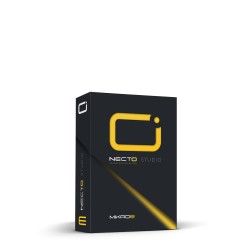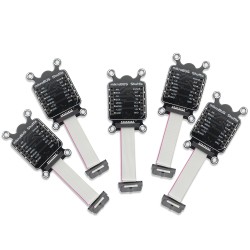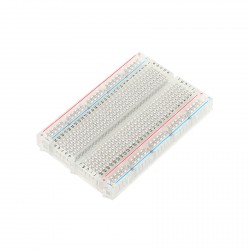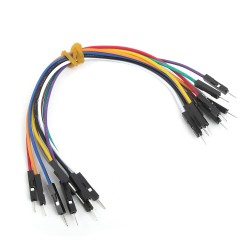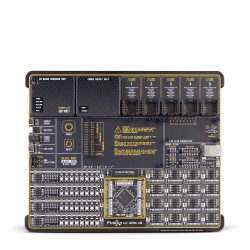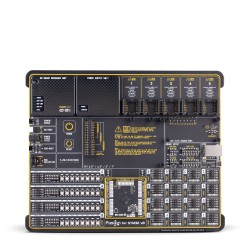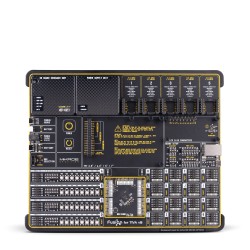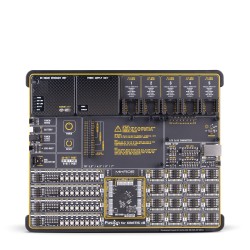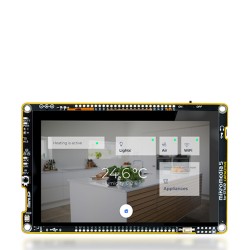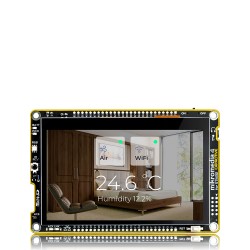Main features
Click Shield for Pi Pico comes equipped with two proprietary mikroBUS™ sockets, allowing all the Click board™ devices to be interfaced with the Raspberry Pi Pico board with no effort at all. This way, Mikroe allows its users to add any functionality from our ever-growing range of Click boards™, such as WiFi, GSM, GPS, Bluetooth, ZigBee, environmental sensors, LEDs, speech recognition, motor control, movement sensors, and many more. More than 1381 Click boards™, which can be stacked and integrated, are at your disposal.

The Raspberry Pi Pico is based on the fast, efficient, and low-cost dual-core ARM Cortex-M0+ RP2040 microcontroller chip running at 133 MHz and sporting 264 KB of SRAM 2 MB of Flash memory, alongside Flash memory, crystal, power supplies, and decoupling, and USB connector. The majority of the RP2040 microcontroller pins are brought to the IO pins on the left and right edge of the board, which are then connected to two existing mikroBUS™ sockets.
This Click Shield also has several switches that perform functions such as selecting the logic levels of analog signals on mikroBUS™ sockets and a selection of logic voltage levels of the mikroBUS™ sockets themselves. Besides, the user is offered the possibility of using any Click board™ with the help of existing bidirectional level-shifting voltage translators, regardless of whether the Click board™ operates at 3.3V or 5V logic voltage level.
Once you connect the Raspberry Pi Pico board with our Click Shield for Pi Pico, it will allow you access to hundreds of Click boards™ working with 3.3V or 5V logic voltage levels. For checking which Click boards™ is compatible with the Raspberry Pi Pico board, please open our Click Shop filter. Our Click boards™ is equipped with a library containing functions and example codes for Mikroe compilers available on LibStock, which can be used, as a reference, for further development.

































